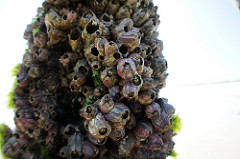Ever wanted to live in Space? Well, that dream might be closer than you think. In 2018, researchers at NASA’s Johnson Space Center released an update paper on the progress of NextSTEP Phase 2. What’s NextSTEP, you ask? It stands for NASA’s Next Space Technologies for Exploration Partnerships program. This program is a public-private partnership that wants to seek commercial development of deep space exploration, such as extensive human spaceflight missions. The first phase of NextSTEP kicked off in 2014, when NASA made the announcement of plans to inhabit the area of space between the earth and the orbit of the moon (cislunar). These plans were created to leverage the commercialization of low earth orbit and will be part of the Deep Space Gate Way. The Deep Space Gateway is a space station planned by NASA for construction in the 2020s (stay tuned to our blog for more information on the Deep Space Gateway).
In 2016, NextSTEP Phase 2 selected five commercial companies to start creating ground prototypes. To ensure that these prototypes can be successful, a test team of NASA engineers has been developing evaluation criteria since 2008. Also known as the ground test protocol, these evaluation criteria are the most important part of Phase 2 of the NextSTEP program. The protocol was created by using both a top-down and bottom-up approach. The top-down approach was based on the exploration goals from the Human Exploration and Operations Mission Directorate (HEOMD), and the flight objectives from the NASA Future Capabilities Team (FCT), Evolvable Mars Campaign (EMC) and the Human Health and Performance (HH&P) teams. The bottom-up approach was written by the same set of organizations but included all of the smaller details of the mission from logistics to avionics, and Mission Control Center operations. After completion, the teams decided that the ground tests will be evaluated using inspection, demonstration, analysis, subsystem standalone testing, and human in the loop (HITL) testing. Finally, the team will recommend the best habitation platform to advance to stage 3!
OPINION: As I understand it, aspects of the Deep Space Gateway are going to be extremely helpful for other missions including travel to Mars and further into the galaxy. The DSG reminds me of Yorktown Station from Star Trek Beyond. However, our Deep Space Gateway will spend more time in Earth’s orbit then floating around in space with Starfleet like the fictional Yorktown. It’s going to be interesting to see just how far we can take this program.
Link: https://ntrs.nasa.gov/archive/nasa/casi.ntrs.nasa.gov/20170005906.pdf
Beaton, K. H., Chappell, S. P., Bekdash, O. S., Gernhardt, M. L. 2018. Development of a Ground Test and Analysis Protocol to Support NASA’s NextSTEP Phase 2 Habitation Concepts. NASA Technical Reports Sever: JSC-CN-39874.


